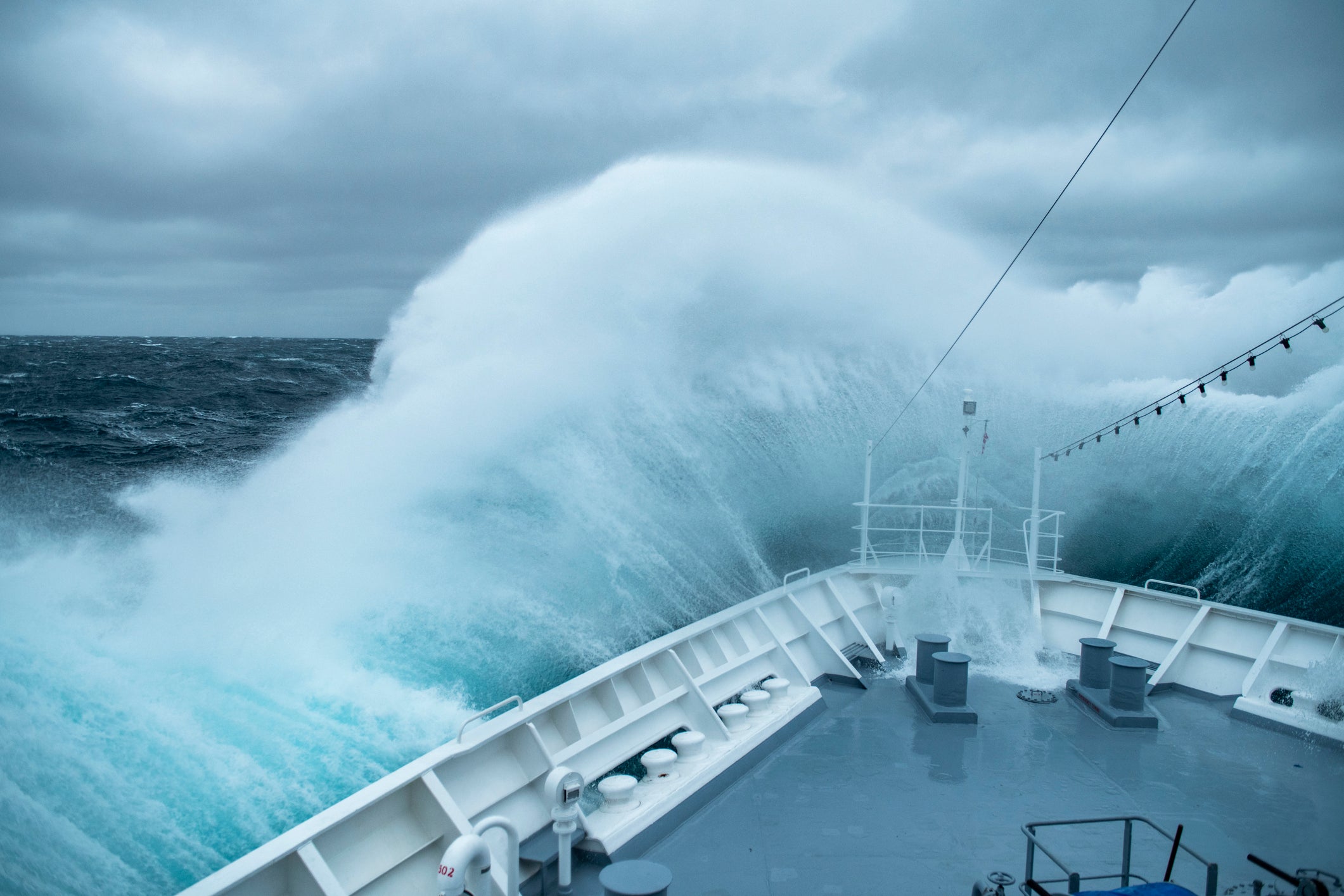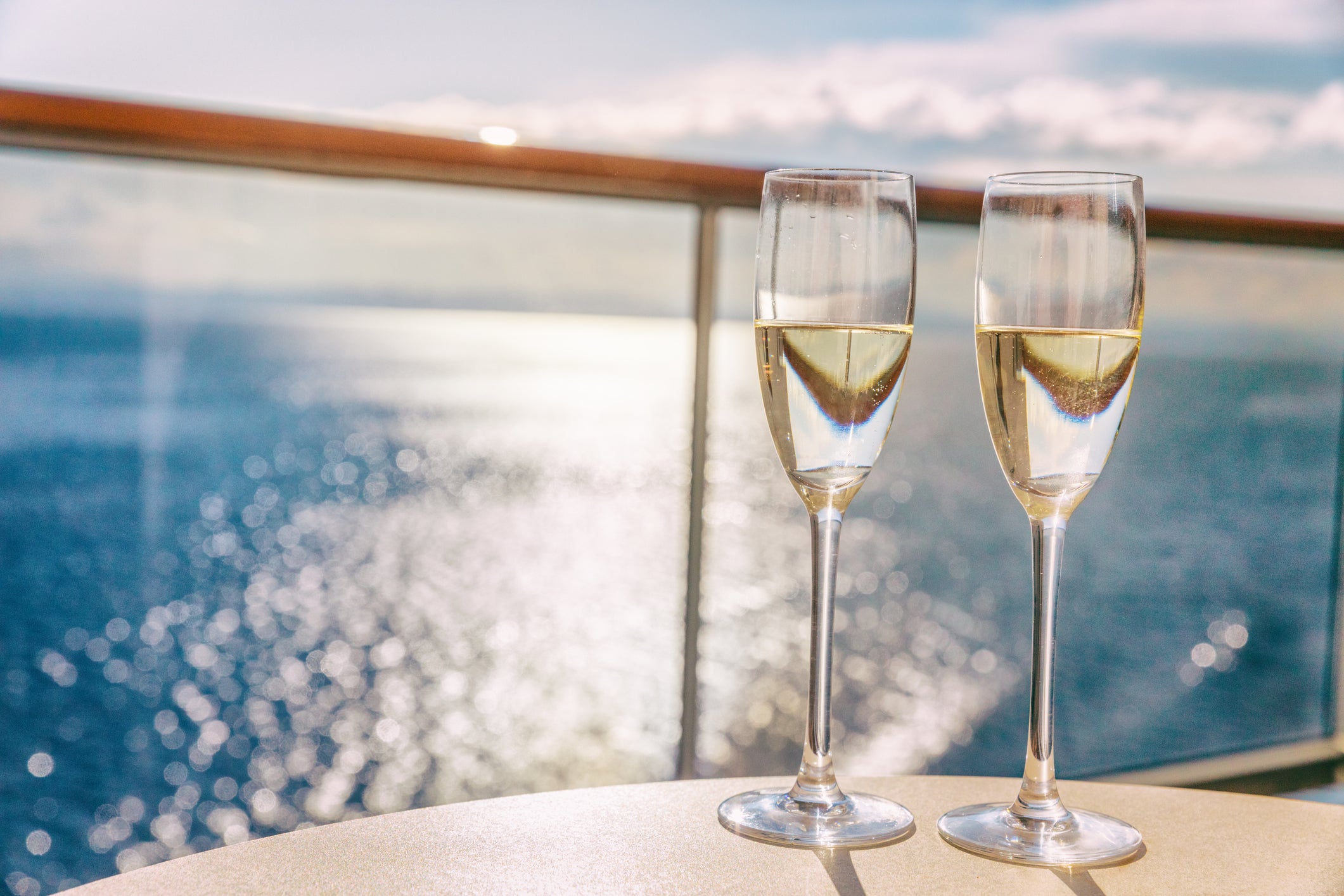The Independent's journalism is supported by our readers. When you purchase through links on our site, we may earn commission.
6 things you might not have thought of to avoid seasickness on a cruise
From seasickness tablets to eating the right foods, here is how to get your ‘sea legs’

A big fear among many first-time cruisers and even experienced sailors is getting seasick.
The rocking of a cruise ship on the waves can create motion or seasickness as your body struggles to adjust to the movement of a vessel.
Your brain can feel the ship moving but your eyes can’t see it, especially if you are indoors, which can create a range of seasickness symptoms.
Signs of seasickness include dizziness, loss of balance, nausea and vomiting.
Many cruise ships have been built to cope with large waves so guests hopefully barely feel the ship move.
But there will be times when the ship gets rocky such as in rough waters or when the vessel is turning, which leave sensitive sailors feeling delicate.
Motion sickness doesn’t have to ruin your cruise though and there are plenty of tips from tablets to accessories and the best cabin or deck to stay on that will help you adjust while you find your ‘sea legs.’
How to avoid getting seasick on a cruise
1. Pack seasickness tablets
The first port of call for many guests suffering or worrying about seasickness is medication.
Bob McGowan, head of operations at Ambassador Cruise Line, suggests taking seasickness tablets before heading on holiday to get your body ready.
He said: “To help your body get used to the gentle rocking of the ship, you can pick up a seasickness tablet from your local pharmacy before heading on holiday.
“Having a few stowed away in your suitcase can provide peace of mind, even if you don’t end up using them. These sorts of tablets are available from every pharmacy and tend to be reasonably priced, making them easy to get your hands on.”
Guest services on a cruise ship should also have a supply of motion-sickness tablets.
Make sure you take the correct dosage and check for side-effects such as feeling drowsy though as this could limit how much you can enjoy your cruise.

2. Non-medicinal options
If you find it hard to take tablets or want an extra option, there are also non-medicinal alternatives such as sea bands.
These are wristbands that apply pressure to acupuncture points on the wrist that are meant to reduce the feeling of nausea and sickness when travelling.
McGowan added: “If bracelets aren’t your thing, the same results can be achieved by adding pressure to your pulse points with your thumbs for two to three minutes.”
Many regular cruise guests also suggest using motion sickness patches that you stick behind your ear or below your belly button. The natural ingredients such as lavender oil, mint, ginger and cinnamon are believed to help prevent nausea.
Will Sarson, travel expert at Riviera Travel, also highlights an earplug trick that has long been used by sailors.
He said “Seasickness occurs when your brain receives conflicting signals from your eyes and ears.
“Simply insert an earplug into one ear to block out some of the signals from your ears. It forces your brain to focus on the visual signals from your eyes instead, helping to reduce the sensation of motion.”
3. Watch the horizon
There are plenty of decent views to enjoy while on a cruise and heading out into the fresh air on deck can be a great way to combat seasickness.
Jay Stevens, chief executive of Wayfarer Travel, said: “Focusing on a steady point outside the ship helps your brain reconcile what it’s feeling with what it’s seeing—giving a natural sense of balance and ease.”
Read more: Weird and wonderful things you can do on a cruise ship
4. Book a midship cabin
Your cruise cabin can be a big factor when it comes to suffering from seasickness as the more you can feel the ship move, the worse your symptoms may become.
It may be more expensive to choose your cabin location but the health benefit should outweigh the costs.
Emma Sanger-Horwell, head of cruise at Kenwood Travel, suggests that midship on a lower deck is generally the most stable area, as it is closest to the ship’s centre of gravity.
She said: “Cabins on upper decks or near the ship’s bow or stern tend to experience more motion, so selecting a room in the middle, both horizontally and vertically, can reduce the sensation of movement.
“If seasickness does occur, heading to a lower deck can help, as this area, closer to the waterline, is more stable.”
5. Adjust your cruise diet
The all-you-can-eat buffet may be tempting but your onboard diet is particularly important if you suffer from seasickness.
Nicky Kelvin, editor at large at The Points Guy travel website, said: “On embarkation day, stick to light, non-greasy meals and avoid alcohol. Staying hydrated is crucial. Later in the cruise, you can resume your normal habits.”
Dr Elise Dallas, GP at The London General Practice, said certain food and drink can exacerbate feelings of nausea and should be avoided such as spicy or greasy foods, alcohol and caffeinated drinks.
Natural remedies such as ginger can also help ease nausea.
Sonia Khan, a senior pharmacist and nutrition expert at FeelGut.co.uk, said: “Ginger’s compounds help calm the stomach and reduce that queasy feeling often triggered by motion.
“Try taking ginger tea, ginger biscuits, or crystallised ginger about an hour before boarding, then keep small amounts on hand to snack on throughout the day if needed. It’s easy on the stomach and can be a quick way to manage mild symptoms as they arise.”
Peppermint tea can also help settle a bad stomach.
Yasmin Peckle, a travel agent with Blue Cruise, explained: “Peppermint or mint teas can help relax the muscles in your stomach and digestive system as as improve the flow of bile which aids digestion.”
Read more: The food and drink staples that Brits can’t live without on a cruise
6. Choose your cruise carefully
It is not just your cabin that is important.
The type of ship, when and where you sail can also affect your sea legs.
Peckle added: “If you’re susceptible to seasickness, we recommend choosing itineraries that combine calmer seas and positive weather, such as Summer in the Mediterranean or June Alaskan cruises, which are generally less likely to cause seasickness than ocean cruises through more turbulent waters.
Check the predicted Douglas Sea Scale for your route and time of year.
This provides a 1-10 rating of the height of expected waves. Seas that regularly feature above seven on the scale include Drake’s passage, Bay of Biscay and South China Sea.
Luxury travel planner Kate Rouse said: “The worst route for UK residents at present, with the surge in ex-UK sailings, is the Bay of Biscay in shoulder season. It can be brutal.”
Linda Armit, head of sales Scotland at Barrhead Travel, also suggests booking a cruise with plenty of port stops so you can get off and enjoy dry land.
She said: “Your travel agent can help you select an itinerary with minimal sea days.”
Another option is a river cruise, where the water will be more calm than the ocean.
Sarson added: “Unlike ocean cruises, river cruises offer much smoother sailing with calmer waters and a more stable ride, making it easier to enjoy the journey without the discomfort of motion.”
Also check the size of the ship.
Phil Evans, managing director at Cruise Nation, said larger ships are built for smooth sailing.
“Many cruises are also equipped with stabilisers to further ensure stability.
“Take the time to research the ships and learn more about the cruise line’s fleets. This could help you understand the chance of feeling any sort of motion sickness, and put your mind at rest.”
Read more: The best river cruises around the world
Join our commenting forum
Join thought-provoking conversations, follow other Independent readers and see their replies
Comments